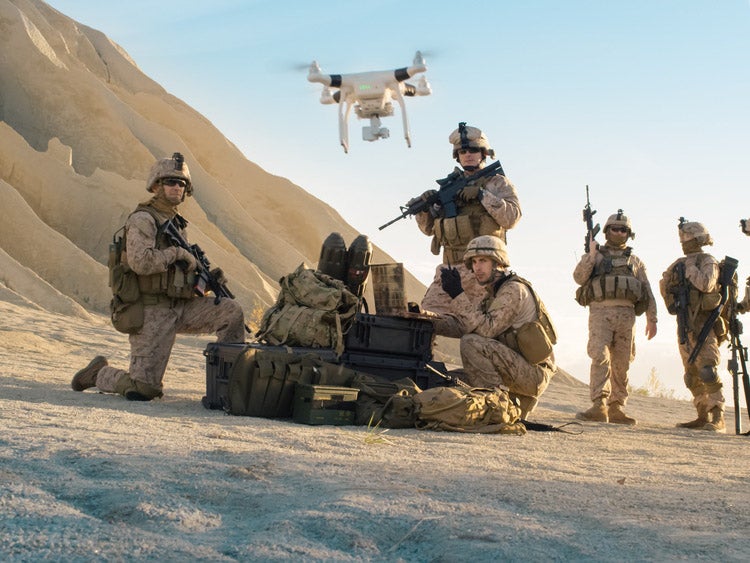
With rapid technological advances and digitalisation creating new military threats, communication systems play an essential role in combating them and protecting troops during operations.
Modern combat operations require integrated tactical communication systems to provide instant communications across diverse platforms and systems to make real-time strategic decisions on the battlefield.
Military communication systems have come a long way since the days of Morse code and signal flags. Smart communication solutions now provide troops with numerous tactical advantages that would not be possible with analogue systems.
The drive to develop new military comms solutions is evident in projected growth. According to a GlobalData report, the global tactical communication market is estimated to grow at a CAGR of 3.68% to $18.8bn by 2031. By the same year, the global electronic warfare market will be worth $11.8bn.
Innovating communications for the future battlefield
Proven technologies such as LiDAR for target tracking, detection, and tactical mapping with other communication technologies such as radios, satellite systems, and data networks are enabling military personnel to communicate effectively and coordinate operations.
Digital communication systems offer clearer and more reliable channels. Connecting with drones further expands the scope of communications and available intel during operations. Digital systems can also transmit and analyse higher volumes of data than analogue systems – but can also be more vulnerable to a cyberattack so require high levels of encryption. Furthermore, systems used on the battlefield must be sufficiently robust to withstand extreme environments.
As modern combat becomes more tech-based, various national defence forces are investing in command, control, communications, computers, intelligence, surveillance, and reconnaissance (C4ISR) systems, and command and control systems (C2).
In 2022, the British Army commissioned L3Harris to build and supply 1,300 Multi-Mode Radios (MMR) for $109m to improve interoperability between the military and its allies. The British Ministry of Defence (MoD) says that MMRs will substantially boost communications on the battlefield. In addition, the units’ high portability and long battery life will help protect communication channels during operations in remote locations.
Crucially, uses of artificial intelligence (AI) and machine learning are widely predicted to transform the future of military communications. Earlier this year, the US Army announced plans to invest more than $200m in AI and machine learning, and over $9.8bn in network modernisation. AI could also be used by hostile forces and such threats, and its development is being carefully monitored and managed. However, the capacity of the technology to analyse extensive volumes of data at high speeds and predict multiple scenarios within seconds means that its uses could be invaluable for communications by armed forces.
Building resilient communications for military operations
Military communication systems will continue to frequently operate in hostile environments that may cause signal interference, leading to reduced range and reducing the capacity to communicate. Such operations require interoperable communication systems that offer swift deployment and easy reconfiguration to adapt to changing operational requirements. The ability to establish and maintain communication links while on the move is crucial for maintaining situational awareness and coordination.
In such a scenario, cables and connectors are critical in military communications because they provide the physical infrastructure for delivering signals and data between communication devices and systems.
Robust and reliable cables can ensure efficient transfer of voice, data, and video signals. This allows for the integration of various components such as radios, antennas, and data terminals, building a unified communication network.
“With a commitment to precision and compatibility while addressing the integration requirements of the various components, Omnetics has developed the Kilo 360™ Warrior Series Connectors,” says an Omnetics spokesperson. “This connector series has been designed to the Nett Warrior specifications and is fully intermatable to the existing Nett Warrior approved connectors.”
As a leading global provider of precision and high-reliability electronic connectors and interconnect systems, Omnetics Connector Corporation, recognises the importance of robust military equipment. With more than three decades of experience in the field, the brand offers micro-miniature and nano-miniature interconnects that deliver high performance in challenging operations environments.
The company’s Bi-Lobe® / Nano-D Connectors, Micro 360® and Nano 360® Circular Connectors, Kilo 360™ Connectors, IP68 Connectors and other customised solutions enable fast setup and reconfiguration of communication networks. These solutions enable flexibility in extending or modifying communication links, accommodating different equipment configurations, and supporting mission-specific needs.
To learn more about the robust solutions by Omnetics, download the document below.


